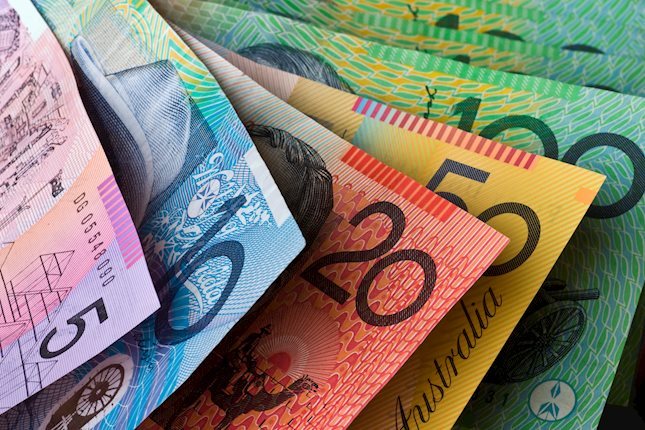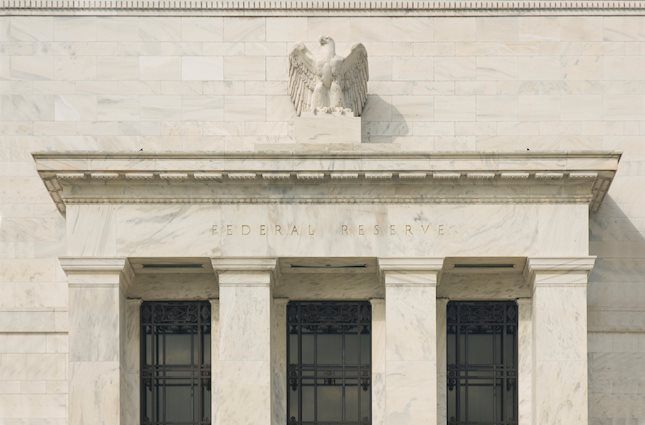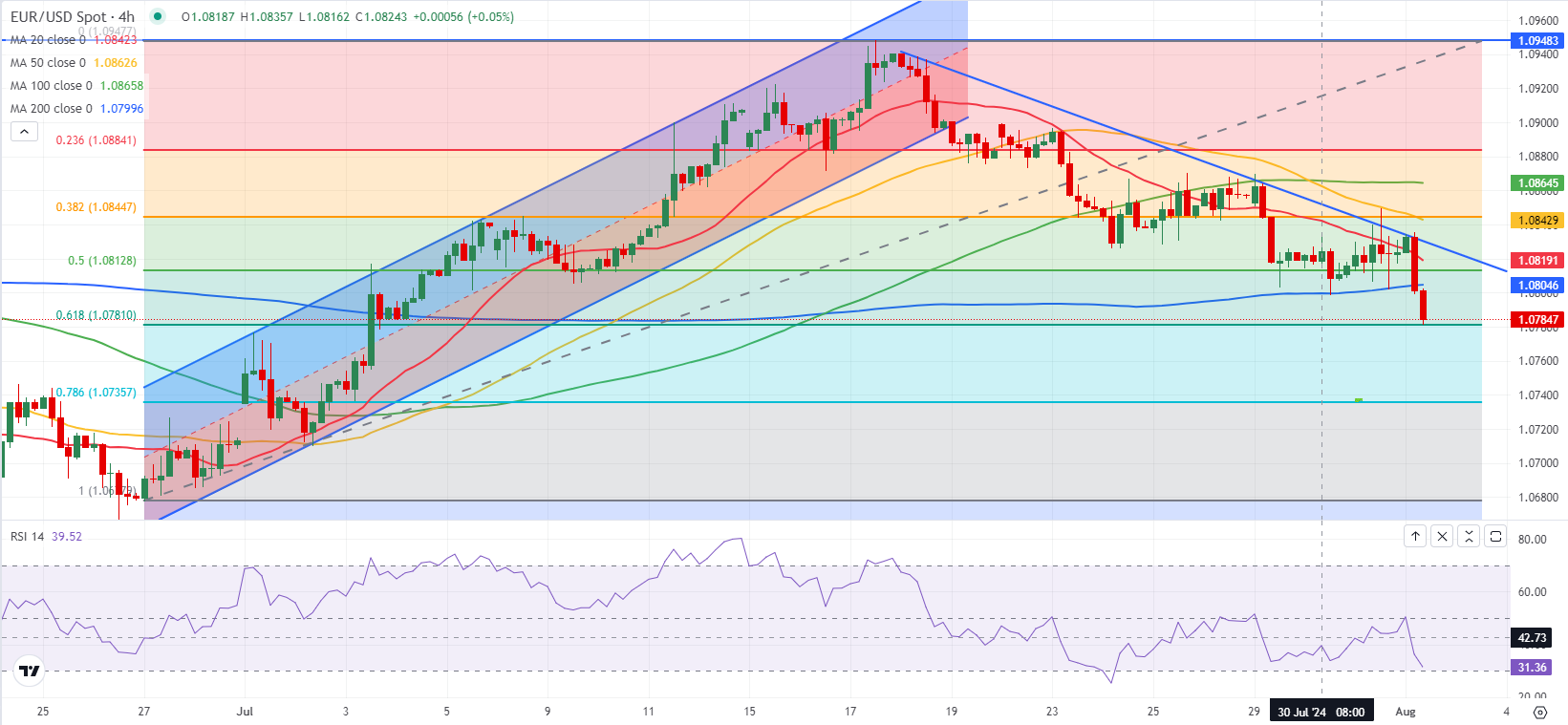- EUR/USD trades at multi-week lows below 1.0800 on Thursday.
- The US Dollar rebounds following the Fed-inspired decline.
- US economic calendar will feature weekly Jobless Claims and ISM Manufacturing PMI data.
EUR/USD edged higher in the late American session on Wednesday and registered modest daily gains as the US Dollar (USD) struggled to find demand following the Federal Reserve's (Fed) monetary policy announcement. The pair, however, came under renewed bearish pressure early Thursday and dropped to its weakest level since early July below 1.0800.
Euro PRICE This week
The table below shows the percentage change of Euro (EUR) against listed major currencies this week. Euro was the weakest against the Japanese Yen.
| USD | EUR | GBP | JPY | CAD | AUD | NZD | CHF | |
|---|---|---|---|---|---|---|---|---|
| USD | 0.67% | 0.67% | -2.66% | 0.00% | 0.44% | -0.83% | -0.93% | |
| EUR | -0.67% | -0.04% | -3.31% | -0.61% | -0.18% | -1.50% | -1.57% | |
| GBP | -0.67% | 0.04% | -3.31% | -0.63% | -0.15% | -1.46% | -1.53% | |
| JPY | 2.66% | 3.31% | 3.31% | 2.71% | 3.22% | 1.87% | 1.81% | |
| CAD | -0.00% | 0.61% | 0.63% | -2.71% | 0.48% | -0.86% | -0.91% | |
| AUD | -0.44% | 0.18% | 0.15% | -3.22% | -0.48% | -1.30% | -1.39% | |
| NZD | 0.83% | 1.50% | 1.46% | -1.87% | 0.86% | 1.30% | -0.07% | |
| CHF | 0.93% | 1.57% | 1.53% | -1.81% | 0.91% | 1.39% | 0.07% |
The heat map shows percentage changes of major currencies against each other. The base currency is picked from the left column, while the quote currency is picked from the top row. For example, if you pick the Euro from the left column and move along the horizontal line to the US Dollar, the percentage change displayed in the box will represent EUR (base)/USD (quote).
The Fed left the policy rate unchanged at the range of 5.25%-5.5% following the July policy meeting, as widely anticipated. Although Fed Chairman Jerome Powell reiterated the data-dependent approach, he acknowledged that a rate cut will be on the table at the September meeting. Additionally, Powell said that there was a "real discussion" about lowering the policy rate at this meeting.
These comments helped the market mood improve and caused the USD to lose interest. Because a September rate cut was already fully priced in ahead of the Fed meeting, according to the CME FedWatch Tool, the USD weakness remained short-lived, not allowing EUR/USD to stretch higher.
In the second half of the day, the US Department of Labor will release the weekly Initial Jobless Claims data. Investors expect the number of first-time applications for unemployment benefits to tick up to 236,000 from 235,000 in the previous week. A noticeable decline in this data could provide an additional boost to the USD and further weigh on EUR/USD. Later in the session, the ISM Manufacturing PMI for July will be watched closely by market participants. If the headline PMI print comes in above 50, the immediate reaction could support the USD. On the other hand, a negative surprise is likely to hurt the currency and help EUR/USD limit its losses.
EUR/USD Technical Analysis
EUR/USD turned south after testing the descending trend line resistance, currently located at 1.0830, and the Relative Strength Index extended its slide toward 30, reflecting a buildup of bearish momentum.
The Fibonacci 61.8% retracement of the latest uptrend aligns as immediate support at 1.0780 before 1.0740 (Fibonacci 78.6% retracement) and 1.0700 (psychological level, static level).
On the upside, the 100-day, the 50-day and the 200-day Simple Moving Averages (SMA) form strong resistance in the 1.0800-1.0820 area. Once the pair rises above this region and starts using it as support, an extended recovery toward 1.0860 (20-day SMA) could be seen.
Euro FAQs
The Euro is the currency for the 20 European Union countries that belong to the Eurozone. It is the second most heavily traded currency in the world behind the US Dollar. In 2022, it accounted for 31% of all foreign exchange transactions, with an average daily turnover of over $2.2 trillion a day. EUR/USD is the most heavily traded currency pair in the world, accounting for an estimated 30% off all transactions, followed by EUR/JPY (4%), EUR/GBP (3%) and EUR/AUD (2%).
The European Central Bank (ECB) in Frankfurt, Germany, is the reserve bank for the Eurozone. The ECB sets interest rates and manages monetary policy. The ECB’s primary mandate is to maintain price stability, which means either controlling inflation or stimulating growth. Its primary tool is the raising or lowering of interest rates. Relatively high interest rates – or the expectation of higher rates – will usually benefit the Euro and vice versa. The ECB Governing Council makes monetary policy decisions at meetings held eight times a year. Decisions are made by heads of the Eurozone national banks and six permanent members, including the President of the ECB, Christine Lagarde.
Eurozone inflation data, measured by the Harmonized Index of Consumer Prices (HICP), is an important econometric for the Euro. If inflation rises more than expected, especially if above the ECB’s 2% target, it obliges the ECB to raise interest rates to bring it back under control. Relatively high interest rates compared to its counterparts will usually benefit the Euro, as it makes the region more attractive as a place for global investors to park their money.
Data releases gauge the health of the economy and can impact on the Euro. Indicators such as GDP, Manufacturing and Services PMIs, employment, and consumer sentiment surveys can all influence the direction of the single currency. A strong economy is good for the Euro. Not only does it attract more foreign investment but it may encourage the ECB to put up interest rates, which will directly strengthen the Euro. Otherwise, if economic data is weak, the Euro is likely to fall. Economic data for the four largest economies in the euro area (Germany, France, Italy and Spain) are especially significant, as they account for 75% of the Eurozone’s economy.
Another significant data release for the Euro is the Trade Balance. This indicator measures the difference between what a country earns from its exports and what it spends on imports over a given period. If a country produces highly sought after exports then its currency will gain in value purely from the extra demand created from foreign buyers seeking to purchase these goods. Therefore, a positive net Trade Balance strengthens a currency and vice versa for a negative balance.
Information on these pages contains forward-looking statements that involve risks and uncertainties. Markets and instruments profiled on this page are for informational purposes only and should not in any way come across as a recommendation to buy or sell in these assets. You should do your own thorough research before making any investment decisions. FXStreet does not in any way guarantee that this information is free from mistakes, errors, or material misstatements. It also does not guarantee that this information is of a timely nature. Investing in Open Markets involves a great deal of risk, including the loss of all or a portion of your investment, as well as emotional distress. All risks, losses and costs associated with investing, including total loss of principal, are your responsibility. The views and opinions expressed in this article are those of the authors and do not necessarily reflect the official policy or position of FXStreet nor its advertisers. The author will not be held responsible for information that is found at the end of links posted on this page.
If not otherwise explicitly mentioned in the body of the article, at the time of writing, the author has no position in any stock mentioned in this article and no business relationship with any company mentioned. The author has not received compensation for writing this article, other than from FXStreet.
FXStreet and the author do not provide personalized recommendations. The author makes no representations as to the accuracy, completeness, or suitability of this information. FXStreet and the author will not be liable for any errors, omissions or any losses, injuries or damages arising from this information and its display or use. Errors and omissions excepted.
The author and FXStreet are not registered investment advisors and nothing in this article is intended to be investment advice.
Recommended Content
Editors’ Picks

AUD/USD: Next on the downside comes 0.6500
Further gains in the US Dollar kept the price action in commodities and the risk complex depressed on Tuesday, motivating AUD/USD to come close to the rea of the November low near 0.6500.

EUR/USD: No respite to the sell-off ahead of US CPI
The rally in the Greenback remained well and sound for yet another session, weighing on the risk-linked assets and sending EUR/USD to new 2024 lows in the vicinity of 1.0590 prior to key US data releases.

Gold struggles to retain the $2,600 mark
Following the early breakdown of the key $2,600 mark, prices of Gold now manages to regain some composure and reclaim the $2,600 level and beyond amidst the persistent move higher in the US Dollar and the rebound in US yields.

SOL Price Forecast: Solana bulls maintain $250 target as Binance lists ACT and PNUT
Solana price retraced 7% from $225 to $205 on Tuesday, halting a seven-day winning streak that saw SOL become the third-largest cryptocurrency by market capitalization.

Five fundamentals: Fallout from the US election, inflation, and a timely speech from Powell stand out Premium
What a week – the US election lived up to their hype, at least when it comes to market volatility. There is no time to rest, with politics, geopolitics, and economic data promising more volatility ahead.

Best Forex Brokers with Low Spreads
VERIFIED Low spreads are crucial for reducing trading costs. Explore top Forex brokers offering competitive spreads and high leverage. Compare options for EUR/USD, GBP/USD, USD/JPY, and Gold.
